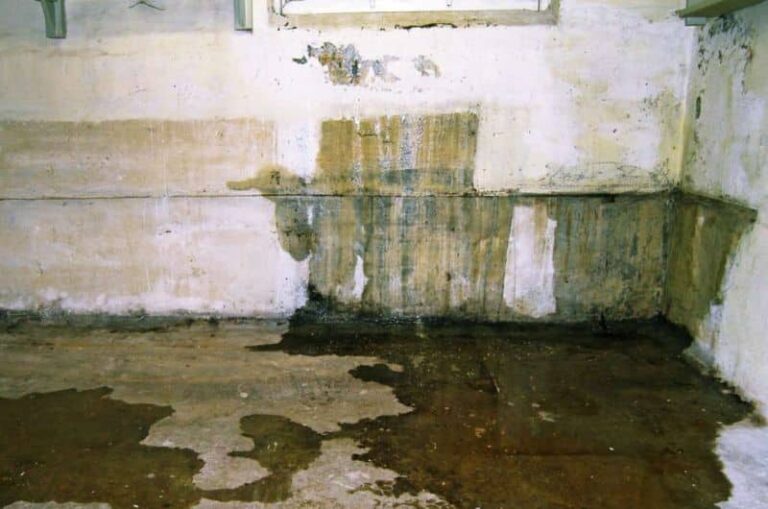Basement Moisture Challenges: How to Conquer Them
Sep 25, 2024
Tired of dealing with pesky moisture in your basement? Don’t let it dampen your mood! In this comprehensive guide, we’ll dive into the nitty-gritty of basement moisture issues. From identifying common sources to implementing practical solutions, we’ve got you covered. Say goodbye to soggy spaces and hello to a dry, beautiful, and healthy basement!
Understand Your Opponent – Common Causes of Moisture
When it comes to moisture in basements, there are various sources that can contribute to the problem. Understanding where the moisture is coming from is crucial in effectively addressing basement issues.
Rain or Groundwater: It falls from the sky and into your basement! Heavy rainfall can seep through cracks in the foundation, while improper grading around your home can lead to high water tables that may cause hydrostatic pressure, allowing the water to force its way into the basement.
Defective gutters and downspouts go hand-in-hand with rain and groundwater issues. When these are clogged, they’re unable to properly divert water away from the foundation, leading to the possibility of water issues.
Interior Moisture Sources: Common culprits include leaks from plumbing, appliances, or HVAC systems. Condensation from poor ventilation can also add to the moisture levels. Whether it’s from a burst pipe, leaking appliance, or plumbing issue, these sources can lead to moisture problems and potential damage if not addressed promptly.
Ventilation with Humid, Outside Air: When humid air from outside enters a poorly ventilated basement, it can lead to condensation and mold growth. Proper ventilation is crucial in preventing basement moisture issues. Installing vents or fans can help circulate fresh air, reducing the chances of excess humidity buildup.
It is essential to address these issues promptly to prevent water damage and mold growth.
Battling Basement Moisture: Key Warning Signs
There are a few surefire signs of moisture in your basement beyond seeing it. Here are some for you to be aware of and look for next time you take a trip downstairs.
Odors: Musty odors could be warning signs of excess moisture. This smell is usually like garbage or dirty water, like swamplands. If you smell this in your basement, keep an eye out for water stains on walls and floors, peeling paint or wallpaper, or a damp feeling in the air.
Condensation: Warm, humid air meeting cool surfaces causes water droplets to form. This common problem is often seen on windows or walls. Proper ventilation and insulation can help prevent condensation buildup in your basement. If left untreated, condensation buildup could mean trouble for your basement.
Dried Water Marks: When still water dries or evaporates in your basement, it tends to leave behind some residue. This can include things like dirt that were in the water, discoloring from minerals like iron, or warping on finished walls. If you see any of these marks in your basement, it’s time to find the source.
Effective Strategies for Tackling Basement Moisture
While dealing with basement moisture issues may be frustrating, the good news is that there are tons of solutions for how to treat it. Whether you need a foundation repair or just need to open a window, you can save your basement. Stay dry with some of the most common basement solutions.
Managing Excess Humidity: Consider using a dehumidifier to maintain optimal humidity levels. Proper ventilation and insulation also play vital roles in controlling humidity levels and preventing mold growth. Regularly monitor and address any signs of high humidity to keep your basement dry and comfortable.
Sealing Foundation Cracks: This is crucial to prevent moisture from seeping into your basement. Use hydraulic cement or epoxy injections to seal the cracks effectively. By addressing this issue promptly, you can safeguard your basement against water intrusion and potential structural damage.
Upgrading Interior Features: Using moisture-resistant paints and sealants on walls and incorporating proper ventilation systems like egress windows can help tremendously. These upgrades can help prevent mold growth, improve overall air quality, and even provide a stylish touch in your basement.
The Bottom Line: Ensuring a Moisture-Free Basement
If you’re dealing with basement moisture, it doesn’t have to dampen your mood.
Just like us, you’re a basement pro now too! Next time you’re in the basement, pay attention to the air, walls, and your belongings. Check for signs of moisture and areas of concern for potential leaks.
You can easily get ahead of problems by regularly checking your basement and adding preventative measures, like dehumidifiers and mold-resistant paint, to your basement.

